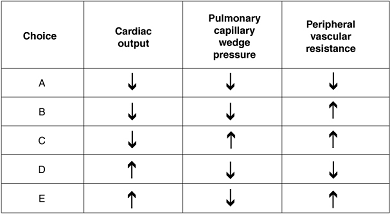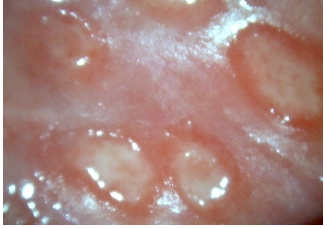Check out today’s Step 2 CK Qmax Question Challenge.
Know the answer? Post it in the comments below! Don’t forget to check back for an update with the correct answer and explanation (we’ll post it in the comments section below).
 A 76-year-old man is admitted to the hospital because of a change in mental status and fever. His past medical history is remarkable for hypertension and an enlarged prostate. His temperature is 39.2°C (102.6°F), pulse is 125/min, blood pressure 78/45 mm Hg, and oxygen saturation on room air is 97%. His skin is very warm without diaphoresis. His cardiac and lung examinations are normal. He is confused and agitated, but a neurologic examination reveals no focal findings. His hemoglobin is 15 g/dL and his WBC count is 27,700/mm³. Urine output over the past 4 hours is 60 mL; the urine is dark and cloudy with bacteria and multiple WBCs. X-ray of the chest is normal. An ECG shows sinus tachycardia without signs of ischemic changes or infarction.
A 76-year-old man is admitted to the hospital because of a change in mental status and fever. His past medical history is remarkable for hypertension and an enlarged prostate. His temperature is 39.2°C (102.6°F), pulse is 125/min, blood pressure 78/45 mm Hg, and oxygen saturation on room air is 97%. His skin is very warm without diaphoresis. His cardiac and lung examinations are normal. He is confused and agitated, but a neurologic examination reveals no focal findings. His hemoglobin is 15 g/dL and his WBC count is 27,700/mm³. Urine output over the past 4 hours is 60 mL; the urine is dark and cloudy with bacteria and multiple WBCs. X-ray of the chest is normal. An ECG shows sinus tachycardia without signs of ischemic changes or infarction.
Which of the following hemodynamic states would most likely be found in this patient?
A. A
B. B
C. C
D. D
E. E
______________________
Want to know the ‘bottom line?’ Purchase a USMLE-Rx Subscription and get many more features, more questions, and passages from First Aid for the USMLE Step 2 CK, including images, references, and other facts relevant to this question.
This practice question is an actual question from the USMLE-Rx Step 2 CK test bank. Get more Step 2 CK study help at USMLE-Rx.com.




D
D
septic shock
D.
D
septic shock
The correct answer is D. This patient has distributive shock secondary to sepsis. This results from the release of inflammatory mediators that cause profound vasodilation and endothelial damage, leading to decreased peripheral vascular resistance and capillary leak. There is a compensatory increase in cardiac output initially during the “warm shock” phase that is manifested in this patient’s warm skin. The pulmonary capillary wedge pressure would likely be low due to hypovolemia and capillary leak.
A is not correct. A decrease in all parameters is also rare but may be seen in neurogenic shock, in which there is both hypotension and bradycardia. Neurogenic shock results from injury to the sympathetic nervous system, which renders the patient unable to modulate blood pressure via vasoconstriction or to increase heart rate. Patients will present with warm extremities as a result of peripheral vasodilation.
B is not correct. These parameters would suggest hypovolemic shock, which occurs as a result of penetrating trauma, severe gastrointestinal bleeding, refractory vomiting or diarrhea, or extensive burns. In response, the cardiovascular system attempts to increase blood flow to the brain, heart, and kidneys through vasoconstriction; this increases peripheral vascular resistance. Patients become tachycardic as the body attempts to increase organ perfusion, but eventually the heart is unable to compensate for the progressive fluid loss. Cardiac output decreases and, consequently, so does the wedge pressure.
C is not correct. These parameters would suggest cardiogenic shock, a global hypoperfusion state that results because the heart is unable to pump effectively. Causes include myocardial infarction, papillary muscle rupture, valvular dysfunction, and free wall rupture. Patients present with hypotension, jugular venous distension, and pulmonary edema. As with hypovolemic shock, the cardiovascular system will try to vasoconstrict in order to maintain blood flow to the brain, heart, and kidneys. Wedge pressure will be elevated as a result of cardiac dysfunction.
E is not correct. These parameters are not usually seen together because cardiac output and peripheral vascular resistance tend to have a reciprocal relationship in states of shock.
Thank you for the explanation!